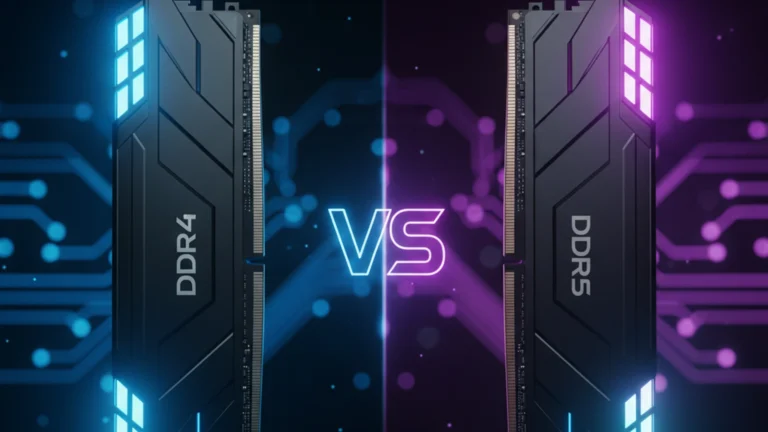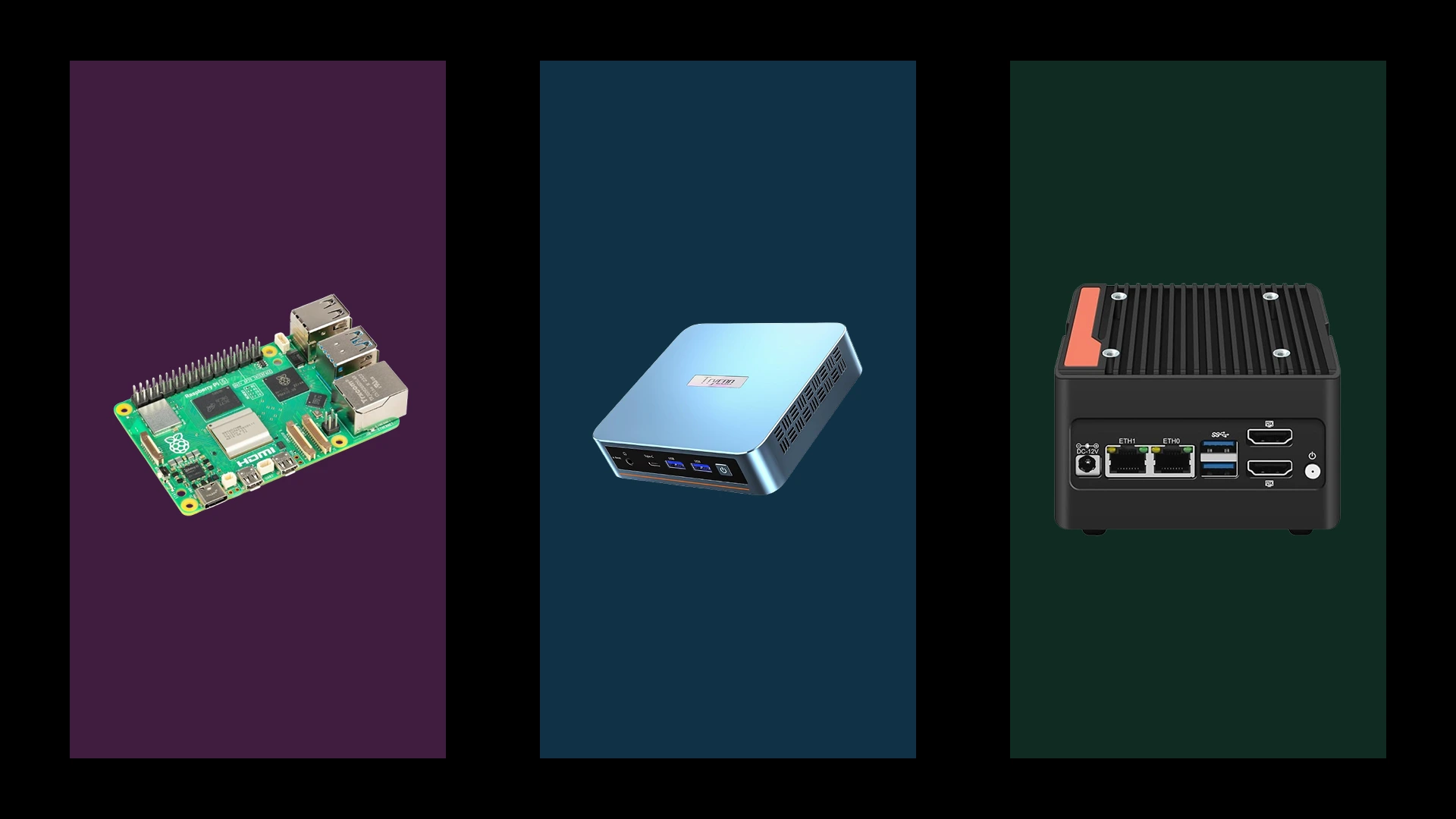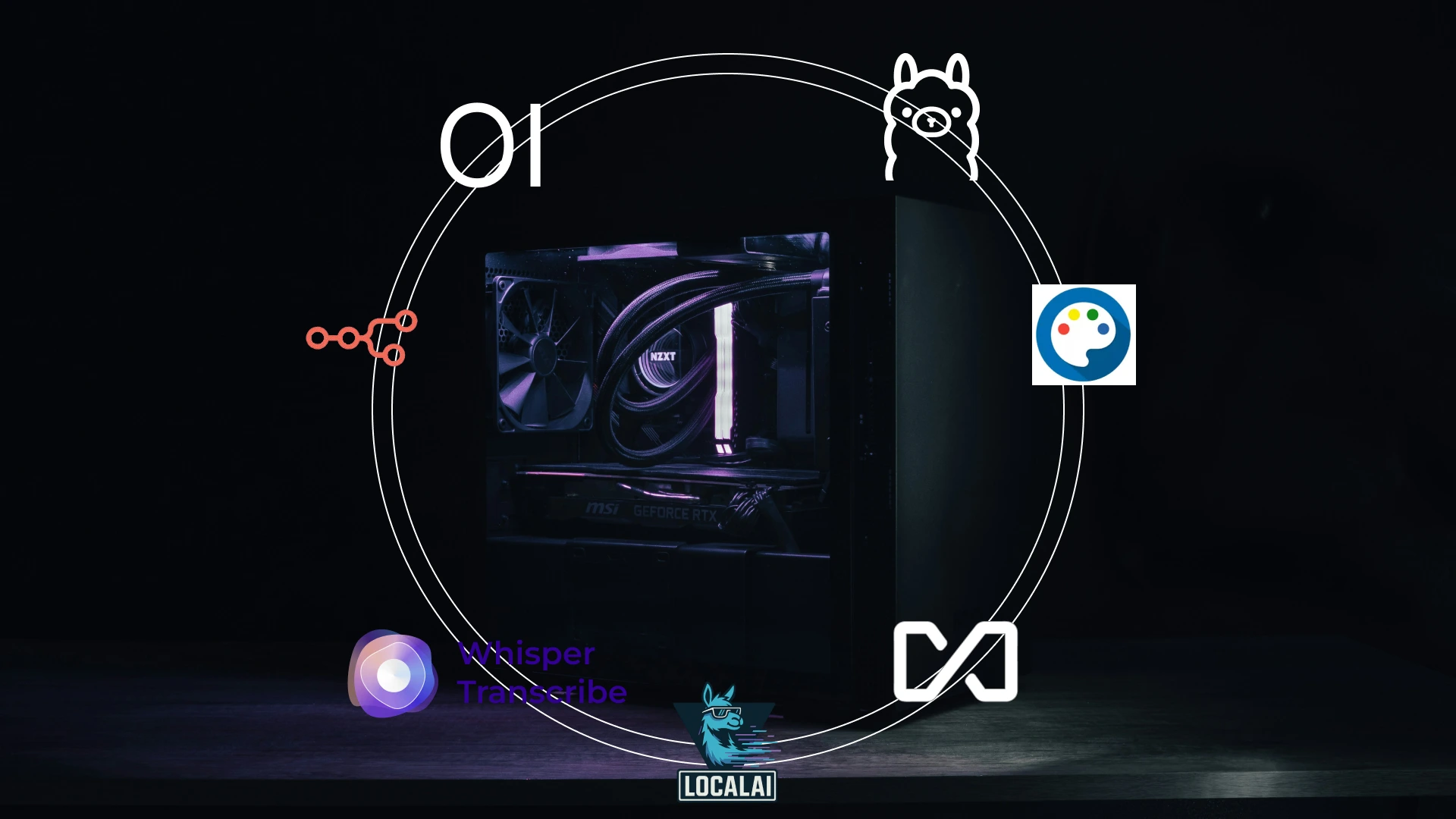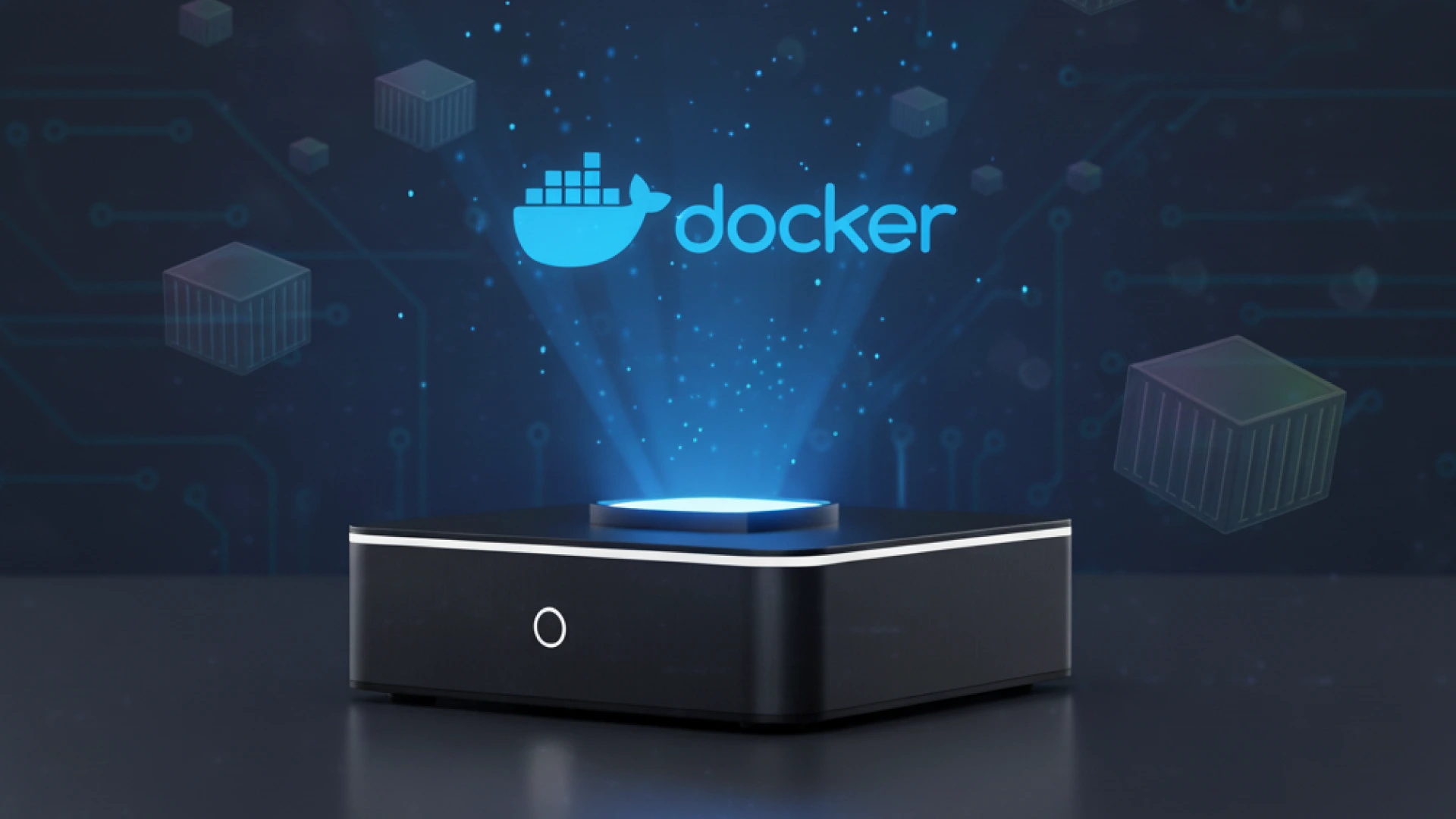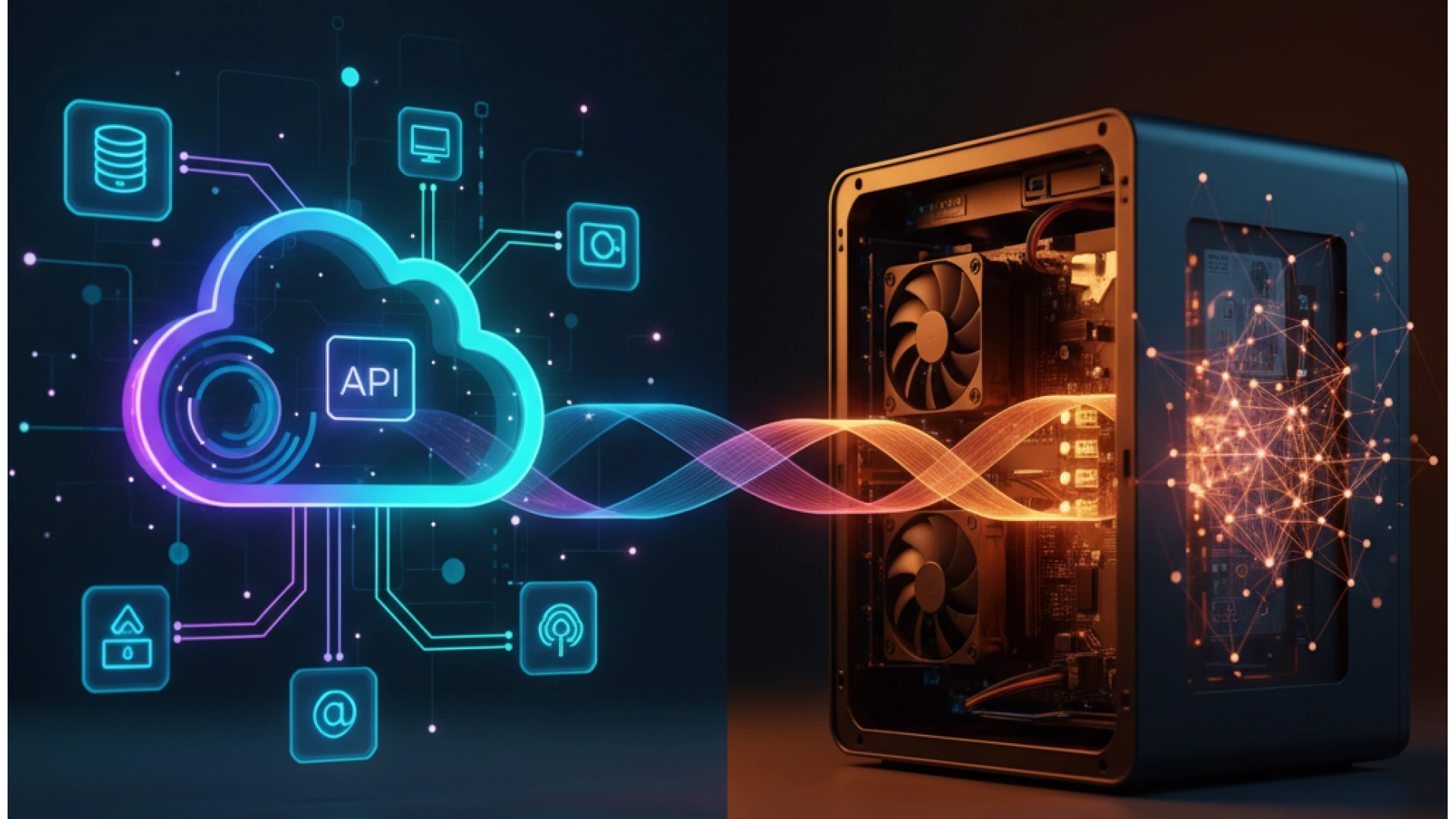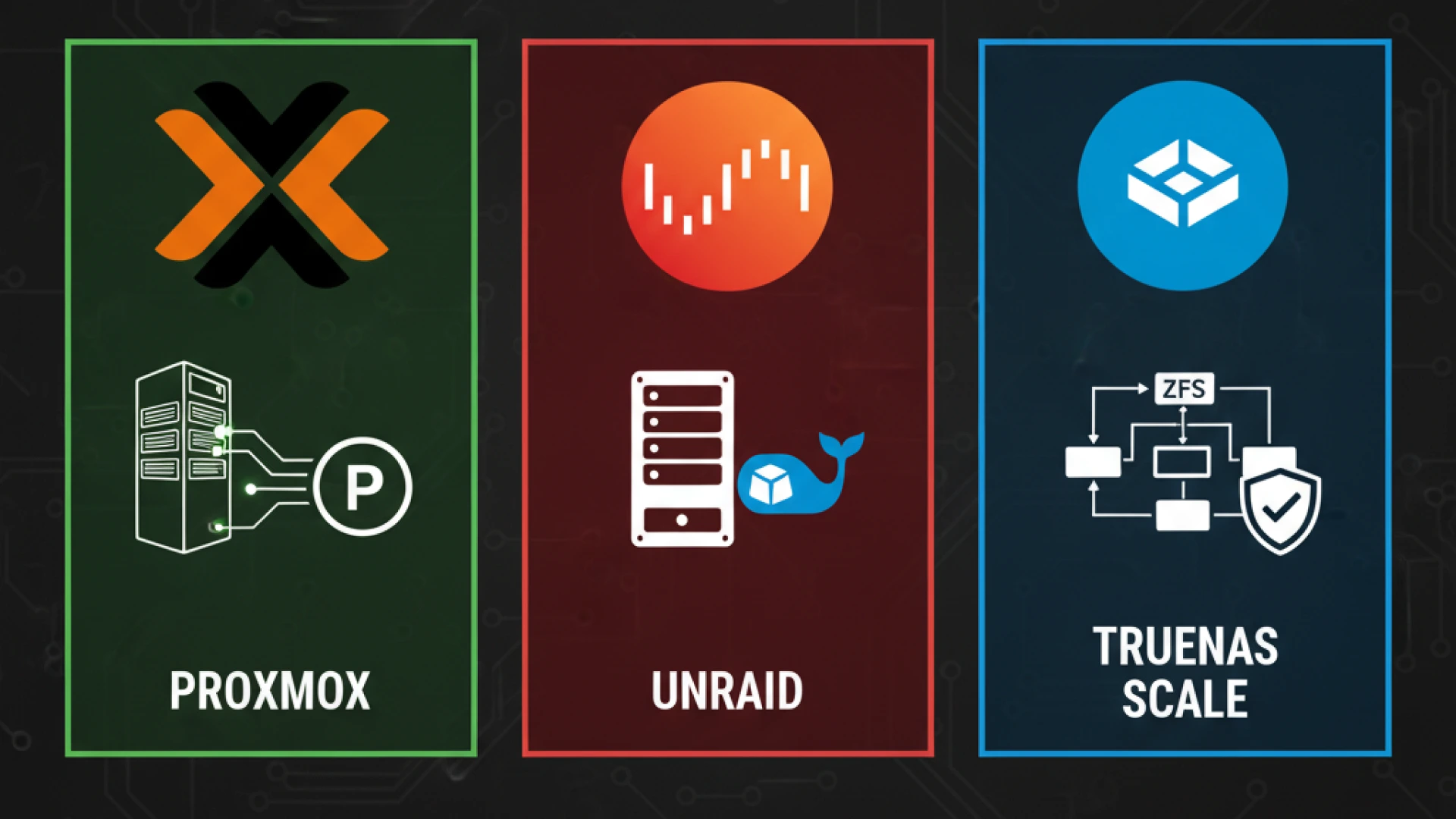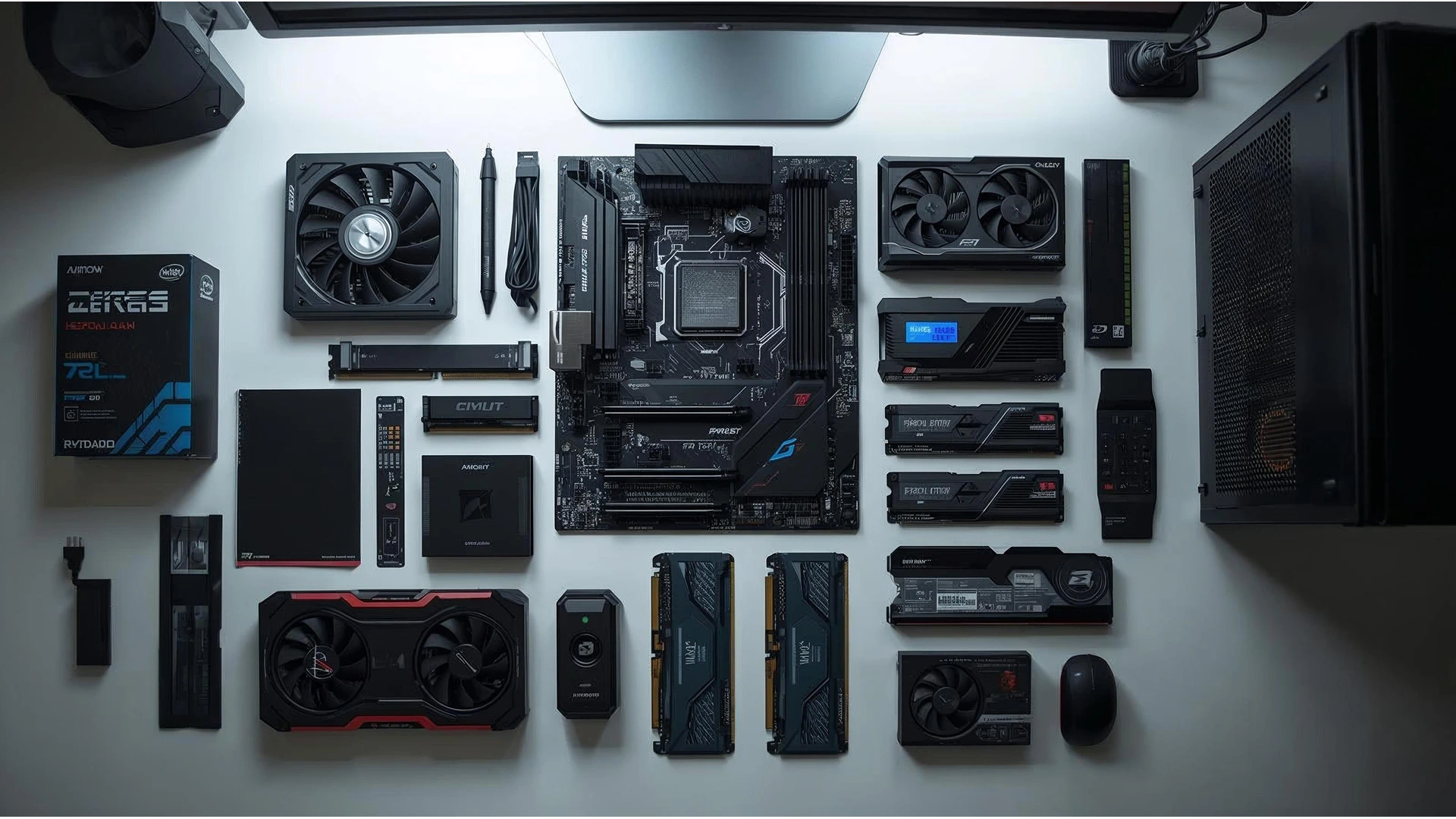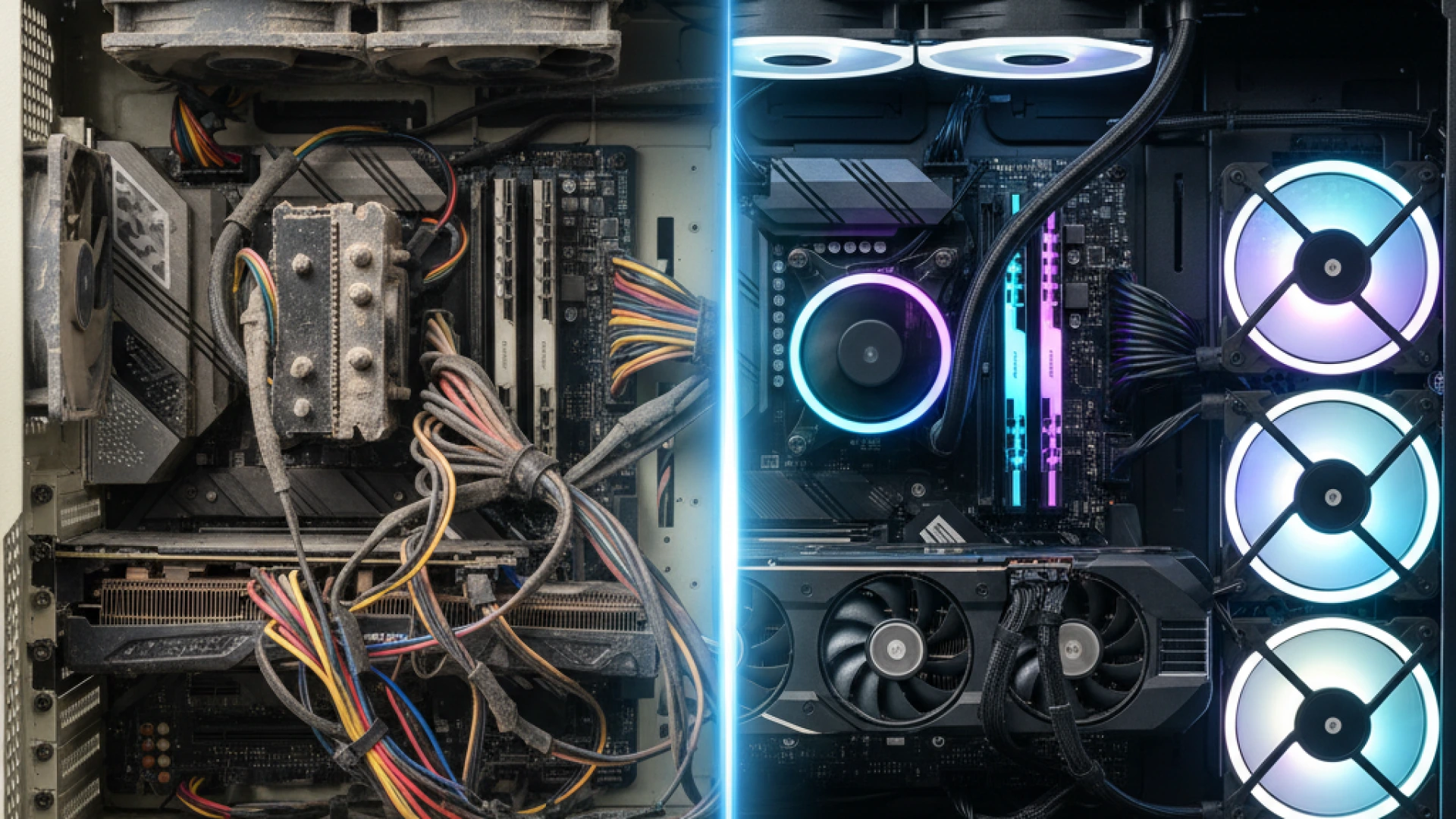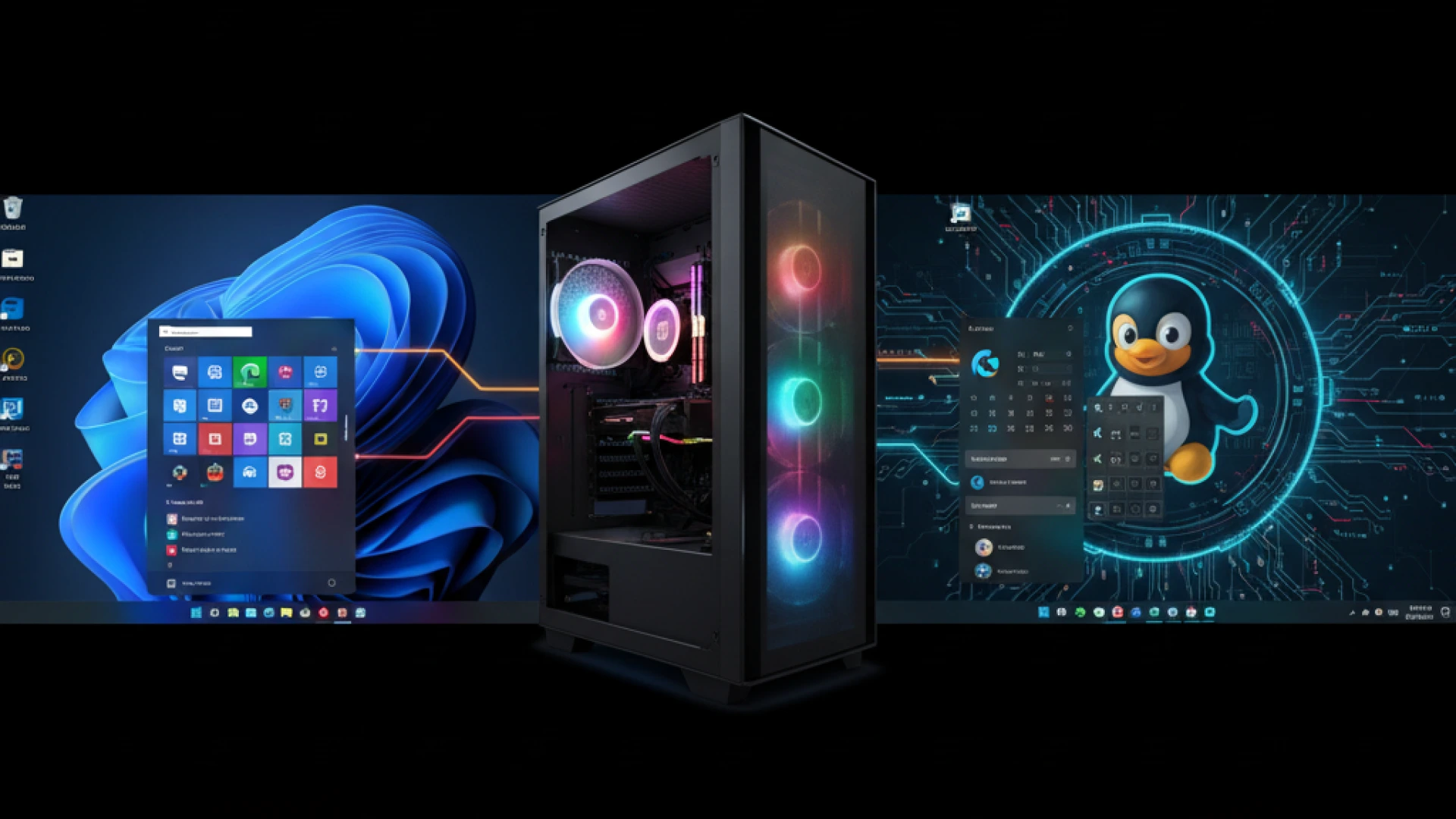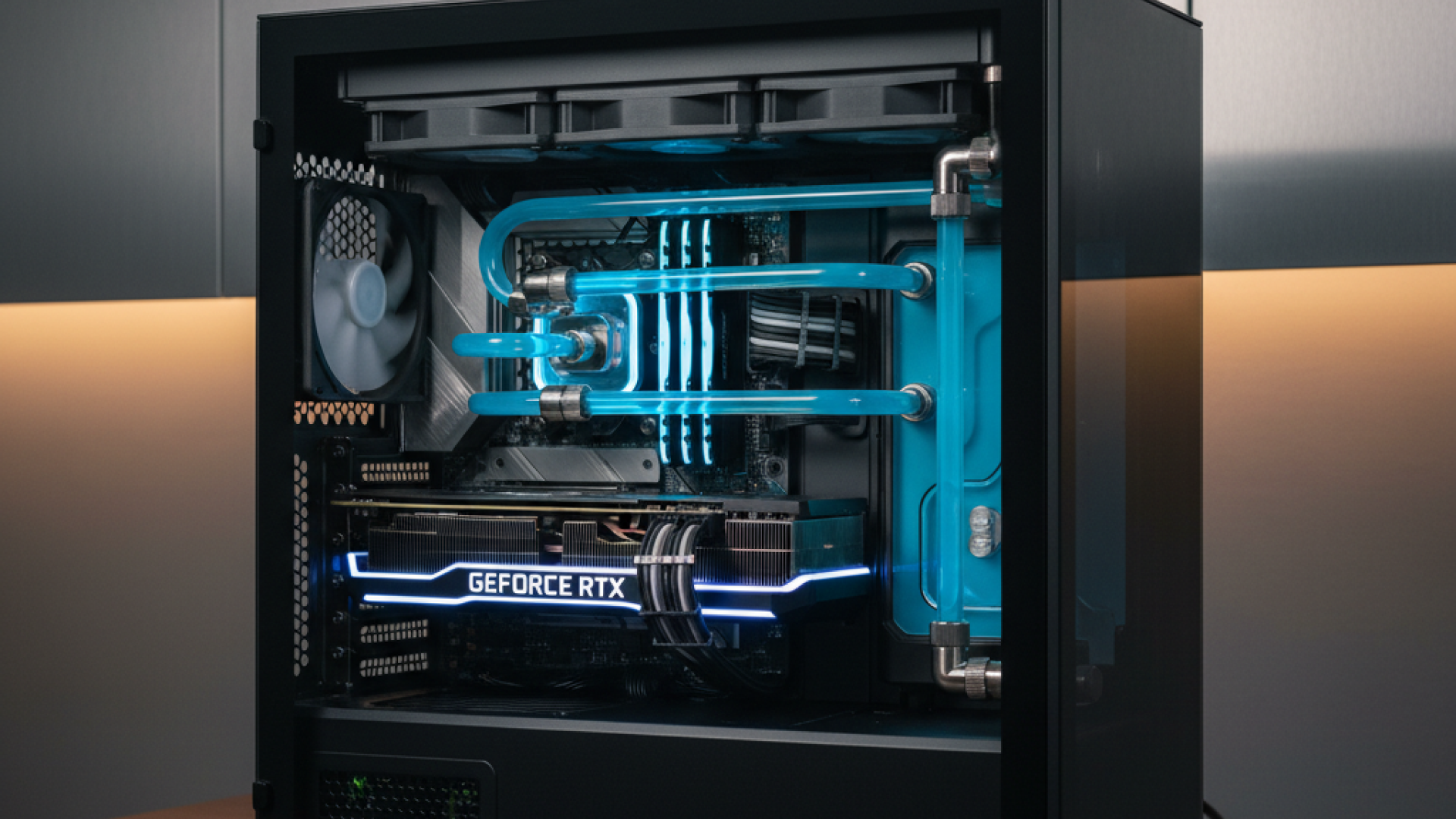In 2025, the DDR5 vs. DDR4 debate has matured beyond early adoption into a strategic decision about matching the right memory technology to your specific budget and performance needs. The landscape has fundamentally shifted. DDR5 has evolved from a premium-priced novelty into a mainstream, accessible standard, while DDR4 continues to offer exceptional value, creating a clear fork in the road for PC builders.
This guide cuts through the noise to provide a data-driven decision framework tailored for gamers and users of AI workloads. By synthesizing community feedback, expert benchmarks from trusted sources including Tom’s Hardware, GamersNexus, Hardware Unboxed, and Puget Systems, and real-world application tests, we provide a clear verdict: both memory types are viable in 2025, but their advantages have sharply diverged. DDR4 remains the champion of cost-effectiveness for budget-conscious builds, while DDR5 has become the definitive choice for new systems, future-proofing, and memory-intensive computational tasks like AI.
This deep dive into memory complements our comprehensive PC building guide, helping you finalize this critical component choice with confidence, backed by current market data and performance metrics.
Technical Breakdown: The Architectural Shift
DDR5 represents far more than an incremental update; it’s a fundamental reimagining of memory architecture that addresses the performance bottlenecks of the DDR4 era. This shift brings transformative changes to core design, speed, power management, and capacity.
Core Design: The Dual-Channel Revolution
The most transformative change in DDR5 architecture is its move to dual independent channels. DDR4 uses a single 64-bit data channel per module. DDR5 re-architects this into two separate, independent 32-bit sub-channels on each module.
This design allows the memory controller to issue commands to both sub-channels simultaneously, significantly increasing command and data efficiency. For applications that juggle numerous small data requests like database queries, virtualization, or heavily multithreaded workloads, this architectural advantage translates directly into measurable performance gains by reducing command congestion and allowing for more concurrent memory access operations.
Speed & Bandwidth: Breaking the Performance Ceiling
The leap in raw speed and bandwidth is substantial. DDR4 typically operates up to 3200 MT/s in mainstream configurations, while DDR5 establishes a baseline of 4800 MT/s, with high-end kits readily achieving 6000-7200 MT/s and beyond.
These higher transfer rates directly expand memory bandwidth. The table below shows the theoretical peak bandwidth for single-module configurations:
| Memory Type | Transfer Rate (MT/s) | Memory Bandwidth (GB/s) |
|---|---|---|
| DDR4-3200 | 3200 | 25.6 |
| DDR5-4800 | 4800 | 38.4 |
| DDR5-6000 | 6000 | 48.0 |
| DDR5-7200 | 7200 | 57.6 |
Even at its baseline, DDR5 delivers a 50% bandwidth increase over standard DDR4, while high-end kits more than double the throughput. This is crucial for bandwidth-intensive tasks like video editing, 3D rendering, and scientific simulations.
Power & Reliability: Efficiency Through Innovation
DDR5 achieves higher performance with greater efficiency. Its operating voltage drops to 1.1V from DDR4’s 1.2V, reducing power consumption.
A key enabler is the on-module Power Management IC (PMIC). This chip moves voltage regulation from the motherboard to the memory module itself. The PMIC receives a higher voltage input (like 12V) and generates the precise, clean power required by the DRAM chips, resulting in tighter voltage tolerances, improved signal integrity, and better stability at high speeds.
For reliability, on-die ECC is a standard feature in all DDR5 chips. It corrects single-bit errors within the DRAM die itself before data is sent out. This is distinct from traditional module-level ECC and is essential for maintaining data integrity at DDR5’s elevated speeds and higher chip densities. It improves manufacturing yields and chip reliability but does not replace full ECC for data-in-transit protection.
Capacity: Preparing for Tomorrow’s Workloads
DDR5 supports dramatically higher-density modules. While DDR4 typically maxes out at 32GB per stick, DDR5 can support up to 128GB per module. This capacity expansion, driven in part by features like on-die ECC, removes previous constraints for users running virtual machines, massive datasets, or professional content creation workflows.
Conclusion
Together, the architectural improvements in DDR5 dual independent channels, dramatically higher memory bandwidth, an integrated PMIC, on-die ECC, and vastly increased capacity represent a fundamental redesign. This positions DDR5 not as a simple iteration, but as the new foundation for the next decade of high-performance computing.
Gaming Performance in 2025: The Real-World Gamers’ Guide
For gamers weighing the jump to DDR5, real-world game benchmarks 2025 reveal a complex picture. Resolution, game genre, and the specific performance metrics you value most dramatically influence whether DDR5’s advantages are a game-changer or a marginal gain
The Big Picture on Average FPS
When gaming at 1440p or 4K with a high-end GPU, the average FPS gains from DDR5 are often modest. In these GPU-bound scenarios, most gaming FPS comparison data shows differences of just 2-8%, with some visually intensive titles showing almost no difference. When your graphics card is working at full capacity to render high-resolution frames, it becomes the primary performance bottleneck, not your RAM.
This makes DDR4 a strong value contender for budget-conscious builders targeting higher resolutions. If you are building a system with a high-end GPU for 1440p or 4K gaming, investing the extra $100-$150 for DDR5 might offer a better return if put toward a more powerful graphics card instead.
The Smoothness Factor (1% Lows)
Where DDR5’s value truly emerges is not in average frames, but in consistency. While average FPS tells one story, 1% low frame rates and the even more demanding 0.1% lows tell the complete story. These metrics capture your worst frame-time spikes, the moments where games stutter or hitch during intense action.
Technical reviewers consistently find that DDR5’s architectural improvements shine brightest in this area. The dual independent channels and high bandwidth allow data requests to be serviced more consistently under heavy load. The practical result is fewer jarring frame drops, smoother camera panning, and a more responsive feel during gameplay.
In demanding titles, DDR5 systems can maintain 10-15% higher 1% lows compared to DDR4 counterparts, even when the average FPS difference is minimal. For gamers sensitive to stuttering, particularly those with high-refresh-rate monitors, this improvement in frame-time consistency is often more noticeable and valuable than raw FPS gains.
Game-Specific Breakdown
CPU-Intensive & Simulation Titles
Not all games benefit equally from DDR5. Simulation-heavy titles that process vast amounts of data show the most dramatic advantages. Microsoft Flight Simulator, with its real-time weather and photogrammetry streaming, can see performance gains of 10-20% in both average FPS and 1% lows when paired with DDR5-6000 or faster.
Similarly, grand strategy games like Civilization VII or Cities: Skylines II, which simulate thousands of AI entities, benefit substantially from DDR5’s increased memory bandwidth. These games are perpetually data-hungry, making them ideal candidates for showcasing DDR5’s capabilities.
Competitive Esports
For the competitive gaming enthusiast playing at 1080p with a powerful CPU, DDR5 for competitive gaming offers a tangible edge. In fast-paced titles like Counter-Strike 2 and Valorant, the combination of high-speed DDR5 and a capable processor can push 5-10% higher frame rates at 1080p low settings compared to DDR4 systems.
Crucially for competitive players, those improved 1% lows translate to fewer micro-stutters during critical moments, tracking an enemy through smoke or flicking between targets. This consistency ensures a more responsive, predictable experience on high-refresh-rate displays.
GPU-Bound AAA Games
On the opposite end of the spectrum sit visually spectacular AAA titles at 4K resolution. Games like Cyberpunk 2077 or Alan Wake 2 maxed out at 4K Ultra settings show minimal difference between DDR4-3200 and DDR5-6000. When your GPU is spending over 90% of its resources rendering complex lighting and textures, memory speed is simply not the limiting factor.
In these scenarios, the performance bottleneck has shifted entirely to the graphics card. Dropping from DDR5-6000 to DDR4-3200 might cost only 2-3 FPS, a difference imperceptible during actual gameplay.
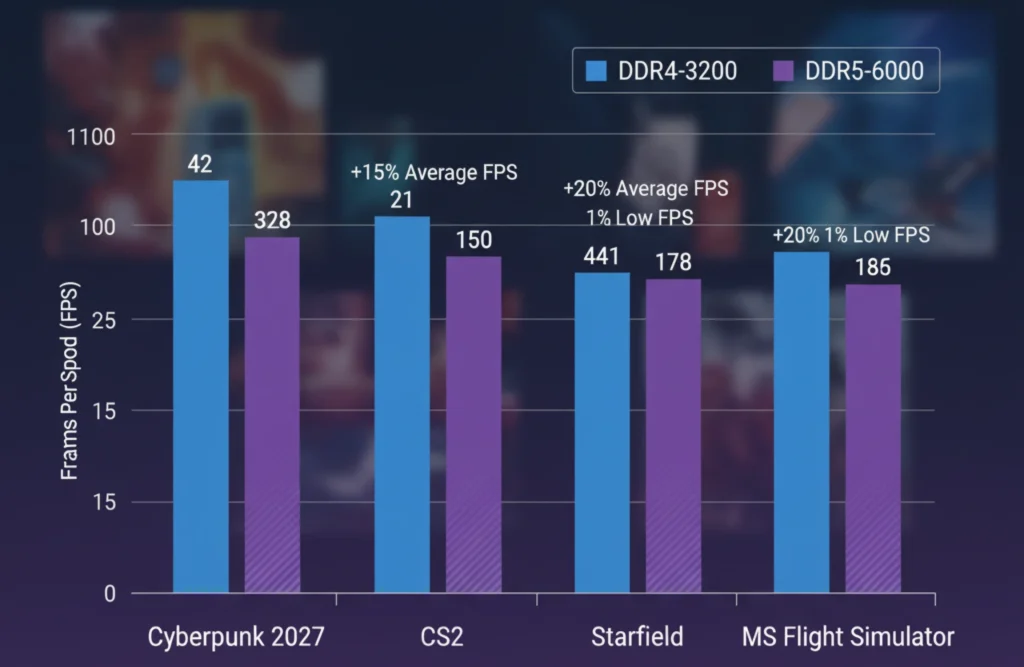
The 2025 Gaming Sweet Spot
After extensive testing, a clear consensus has emerged among hardware manufacturers and technical reviewers for the optimal 2025 gaming configuration.
| Specification | Recommended Value | Why It Matters |
|---|---|---|
| Capacity | 32GB | Sufficient for modern games & multitasking; prevents slowdowns |
| Speed | DDR5-6000 | The performance sweet spot for both AMD and Intel platforms |
| Latency | CL30 | Optimizes memory latency for snappier response times and higher 1% lows |
This specification hits the perfect balance. The 6000 MT/s speed provides substantial bandwidth without requiring extreme voltage or aggressive tuning that can compromise stability. The CL30 latency keeps access times tight, minimizing the delays that cause stuttering. For most gamers, this configuration delivers 95% of the performance of exotic DDR5-7200+ kits at a fraction of the cost and complexity, making it the intelligent choice for balancing performance, reliability, and value.
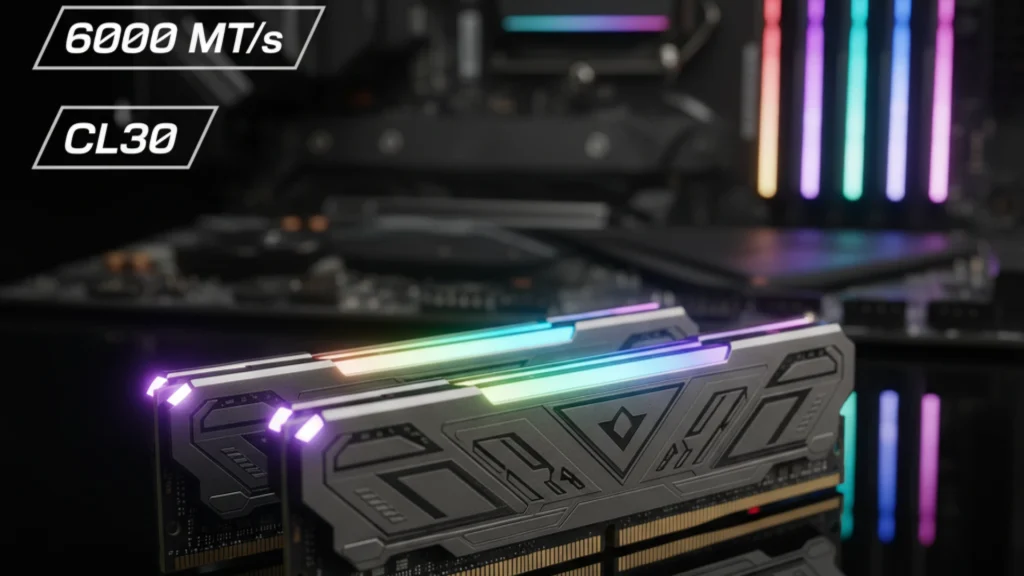
AI and Professional Workload Requirements: Why DDR5 is Essential
For content creators, data scientists, and AI enthusiasts running demanding professional applications, the DDR4 vs. DDR5 debate takes on an entirely different character. Unlike gaming, where marginal gains dominate the conversation, bandwidth-intensive tasks reveal DDR5’s true capabilities for professional environments where productivity and efficiency are paramount.
Why Bandwidth is King
The fundamental difference between gaming and professional workloads lies in what they demand from memory. Gaming performance is often latency-sensitive, and quick access to small chunks of data matters most. AI memory requirements, machine learning operations, and data processing tasks, however, are overwhelmingly bandwidth-dependent. These applications constantly shuttle massive datasets between RAM and the processor, making raw throughput the critical performance metric.
DDR5’s architectural advantages, those dual independent channels and significantly higher transfer rates, directly translate to measurable performance improvements in these scenarios. When you’re training a machine learning model, processing RAW photographs in batch operations, or rendering complex 3D scenes, the system needs to move gigabytes of data every second. DDR5’s 50-100% bandwidth advantage over DDR4 isn’t just a specification; it’s time saved on every operation.
The difference in bandwidth between DDR4 and DDR5 configurations is substantial:
| Memory Specification | System Bandwidth | Advantage Over DDR4-3200 |
|---|---|---|
| DDR4-3200 | 33.6 GB/s | Baseline |
| DDR5-4800 | 38.4 GB/s | 14% faster |
| DDR5-5600 | 69.2 GB/s | 106% faster |
| DDR5-6000 | 72.0 GB/s | 114% faster |
Quantifiable Performance Gains
Real-world benchmarks demonstrate DDR5’s impact across professional applications, showing that the bandwidth advantage translates directly into reduced processing times.
- Compression & Calculation: Computational workloads show some of the most dramatic improvements. In y-cruncher, a benchmark that calculates mathematical constants while stressing memory subsystems, DDR5 systems deliver 25%+ faster performance compared to DDR4 configurations. These gains scale with memory speed; DDR5-6000 kits consistently outperform DDR5-4800, which in turn significantly outpaces DDR4-3200.
- Creative Suite: Adobe’s content creation RAM-hungry applications show variable but substantial benefits. Lightroom Classic, which processes RAW images and applies complex adjustments across entire photo libraries, demonstrates up to 28% improvement when moving from DDR4-3200 to DDR5-6000. The difference becomes particularly noticeable during operations like generating preview renders or applying AI-powered masking across hundreds of images.
Photoshop and Premiere Pro show more modest gains, typically 8-15% but these improvements compound over hours of professional work. When you’re running multiple filters, working with dozens of high-resolution layers, or scrubbing through 4K timelines, every percentage point of performance translates to reduced waiting and improved workflow fluidity.
- 3D Rendering: Applications like Blender benefit substantially from increased bandwidth during both viewport performance and final rendering. Complex scenes with detailed geometry, high-resolution textures, and sophisticated materials all demand rapid memory access. DDR5 systems maintain more responsive viewport navigation and can reduce render times by 10-20% depending on scene complexity and whether you’re using CPU or GPU rendering.
Local AI and Memory Capacity
Here’s where DDR5’s advantages become not just beneficial but essential. The emerging trend of running local AI models, particularly large language models (LLMs), has introduced entirely new demands on consumer hardware, making future-proofing for AI a critical consideration.
Understanding LLM memory needs requires recognizing how these models consume RAM. The rule of thumb is straightforward but demanding: a model’s parameter count roughly correlates to its minimum memory requirement. Different model sizes have specific memory requirements:
| Model Parameters | Minimum RAM Recommended | Use Case |
|---|---|---|
| 7B (e.g., Llama 3 7B) | 16GB | Basic local AI tasks |
| 13B (e.g., Llama 2 13B) | 32GB | Intermediate AI workloads |
| 34B+ (e.g., Llama 2 34B) | 64GB | Advanced AI development |
| 70B+ (e.g., Llama 2 70B) | 128GB+ | Research-grade models |
These requirements stem from how AI models store their “knowledge” in parameters, with each parameter typically requiring 2 bytes in 16-bit precision (FP16), commonly used for inference. An additional overhead of approximately 20% is needed for caching and other operations during inference.
This is where DDR5’s support for higher-capacity modules becomes transformative for future-proofing for AI work. While DDR4 typically maxes out at 32GB per stick in consumer configurations, DDR5 readily supports 48GB and 64GB modules, with 128GB sticks available for extreme configurations. A simple 2x48GB DDR5 kit provides 96GB of total system memory, enough to comfortably run substantial local AI models while maintaining headroom for the operating system and other applications.
For enthusiasts and professionals serious about local AI experimentation without investing in server-grade hardware, DDR5 isn’t just preferable, it’s practically mandatory. The combination of higher bandwidth for faster inference times and dramatically increased capacity for loading larger models makes DDR5 the only realistic choice for this rapidly growing use case.
As AI tools become increasingly integrated into creative workflows and everyday computing, this capacity advantage will only grow more critical. The ability to run sophisticated AI models locally, without cloud dependencies, represents a paradigm shift in how we interact with these technologies, and DDR5 provides the foundation that makes it accessible on consumer platforms.
Cost, Compatibility, and Future-Proofing in 2025
Understanding the DDR5 versus DDR4 cost landscape and its platform implications is essential for making an informed purchasing decision. This isn’t simply about buying faster RAM; it’s about committing to an entire ecosystem that will define your upgrade path for years to come.
The Value Equation
The pricing landscape for memory has shifted significantly. As of 2025, while the price gap between DDR4 and DDR5 has narrowed, DDR4 continues to hold a value advantage for budget-conscious builders.
- A quality 32GB DDR4-3200 kit remains a cost-effective choice, typically priced around $50-60.
- In comparison, a performance-oriented 32GB DDR5-6000 kit now starts at approximately $90-120.
This price differential means you could pay roughly 60-100% more for a DDR5 kit of the same capacity. For a budget-constrained build, these savings could be reallocated to a more impactful component upgrade, such as a better GPU. However, it’s worth noting that broader market dynamics are at play. Major memory manufacturers like Samsung, SK hynix, and Micron have been phasing out DDR4 production in favor of more profitable DDR5 and HBM, leading to reduced DDR4 supply. In a notable market shift, DDR4 spot prices surged through the first half of 2025, at one point even reaching parity with DDR5 prices.
Platform Lock-In Reality
Choosing between DDR4 and DDR5 is a decision that extends far beyond the memory modules themselves. It is fundamentally a platform decision that dictates your compatible motherboard and CPU options. DDR5 is not backwards compatible with DDR4; the physical keying on the modules and motherboard slots is different, preventing accidental (and damaging) installation of the wrong type.
The table below clarifies which platforms support each memory type:
| Platform | DDR4 Platforms | DDR5 Platforms |
|---|---|---|
| Intel | LGA1200 (10th/11th Gen) Some LGA1700 boards | LGA1700 (12th/13th/14th Gen) LGA1851 (Arrow Lake & future) |
| AMD | AM4 (Ryzen 1000-5000 series) | AM5 (Ryzen 7000/8000/9000+) |
This table highlights a critical reality: there is no upgrade path from DDR4 to DDR5 without replacing both your motherboard and CPU.
The industry’s direction is clear. All new platforms from both Intel and AMD are exclusively for DDR5. Intel’s latest LGA1851 socket, designed for Arrow Lake processors, supports only DDR5 memory, marking the end of mainstream DDR4 support for Intel’s new platforms. Similarly, AMD’s AM5 platform, supporting Ryzen 7000, 8000, and 9000 series CPUs, is DDR5-only from its inception. Your memory choice today locks you into a specific platform generation and its associated upgrade path.
Future-Proofing Analysis
For anyone building a new system in 2025, the future-proofing argument leans decisively toward DDR5.
DDR4 is now in a “maintenance phase.” It offers exceptional value for current performance needs on older platforms, but has no place in any new, forward-looking motherboard design. By choosing a DDR4 platform today, you are investing in an ecosystem that has already reached its peak, meaning your next significant upgrade will require a full platform replacement (motherboard and CPU).
In contrast, opting for DDR5 means aligning with the exclusive memory standard of all current and future mainstream platforms. Building on an AMD AM5 or Intel LGA1851 platform with DDR5 not only gives you access to the latest CPUs but also ensures a more straightforward upgrade path. You can expect to upgrade your CPU in the coming years to models that will still use your existing DDR5 memory. This makes DDR5 the forward-looking choice for new builds, designed to remain relevant through multiple upgrade cycles.
Conclusion and Recommendations
Your final decision should balance your immediate budget against your long-term plans for the system.
Choose DDR4 if… you are building on a strict budget, upgrading an existing compatible system (like AM4 or LGA1700 with DDR4 support), or your primary use case (like casual gaming) shows minimal performance gains from DDR5.
Choose DDR5 if… you are building a new, high-end PC for gaming or content creation, want the best performance for bandwidth-intensive tasks, and, most importantly, wish to maximize your system’s longevity and upgrade potential on modern AM5 or LGA1851 platforms.
2025 Buyer’s Guide: Clear-Cut Recommendations
After examining architecture, benchmarks, pricing, and platform compatibility, it’s time for actionable recommendations. Here is your definitive decision framework for choosing the best RAM for gaming and professional workloads in 2025, based on your specific needs and budget.
Choose DDR5 If:
DDR5 is the definitive choice for builders and professionals who fit any of these profiles
- You are building a new, high-end system from scratch. If you’re investing in a fresh build with an AMD AM5 or Intel LGA1851 platform, DDR5 is not optional; it’s required. The industry has moved on, and all new platforms are DDR5-exclusive, making it the only choice for a new, high-performance system.
- Your workflow involves AI, machine learning, heavy content creation, or data science. For these bandwidth-intensive tasks, DDR5’s architectural advantages are transformative. Applications like Adobe Lightroom can see up to a 28% performance improvement with DDR5, and computational tasks in y-cruncher can be 25% faster. Running local LLMs and AI models also demands the high capacity that DDR5 readily provides.
- You are a competitive gamer seeking every possible edge. If you’re targeting high-refresh-rate competitive gaming at 1080p with a top-tier CPU, DDR5 can deliver a tangible advantage. Independent testing has shown average frame rate improvements of up to 31% over DDR4 in some scenarios, alongside critically higher 1% low FPS for a smoother experience.
- Your priority is long-term future-proofing. DDR5 is the foundation for all current and future platforms. Investing in a DDR5 system today, especially on AMD’s AM5 platform, which is supported through at least 2027, ensures a straightforward CPU upgrade path for years without needing to replace your memory.
Recommended Kits:
- Gaming/General Use: DDR5-6000 CL30 32GB is widely recognized as the performance sweet spot for 2025, offering an ideal balance of speed and latency for both AMD and Intel systems.
- AI/Content Creation: DDR5-6400 64GB or higher. Prioritize capacity and bandwidth for professional workloads. Kits like a 2x48GB configuration are ideal for demanding tasks without requiring server-grade hardware.
Choose DDR4 If:
DDR4 remains an intelligent and value-driven choice for these specific scenarios
- You are building a strict budget-focused gaming PC. When every dollar counts, the $40-60 savings from choosing DDR4 can be redirected toward a more impactful component upgrade, like a better GPU. For a DDR4 budget build, this often results in better real-world gaming performance for the money.
- You are upgrading an existing, compatible AM4 or LGA1200/1700 (DDR4) system. If you already own a system with a DDR4 motherboard, upgrading your existing RAM is the most cost-effective path. Replacing your entire platform (motherboard and CPU) just for DDR5 is rarely justified from a performance-per-dollar perspective.
- Your primary gaming is at 1440p or 4K, where the GPU matters most. At higher resolutions, the performance bottleneck shifts almost entirely to the graphics card. The difference between DDR4 and DDR5 in these GPU-bound scenarios often shrinks to a minimal 2-5% in average FPS, making the premium for DDR5 difficult to justify for pure gaming.
- You want the absolute best price-to-performance ratio. For pragmatic builders, DDR4 delivers approximately 90-95% of DDR5’s gaming performance in many titles at a significantly lower cost, representing outstanding value.
Recommended Kits:
- Optimal Choice: DDR4-3600 CL16 or CL18 32GB. This specification offers excellent performance for gaming on older platforms at a highly competitive price.
Capacity Guidelines
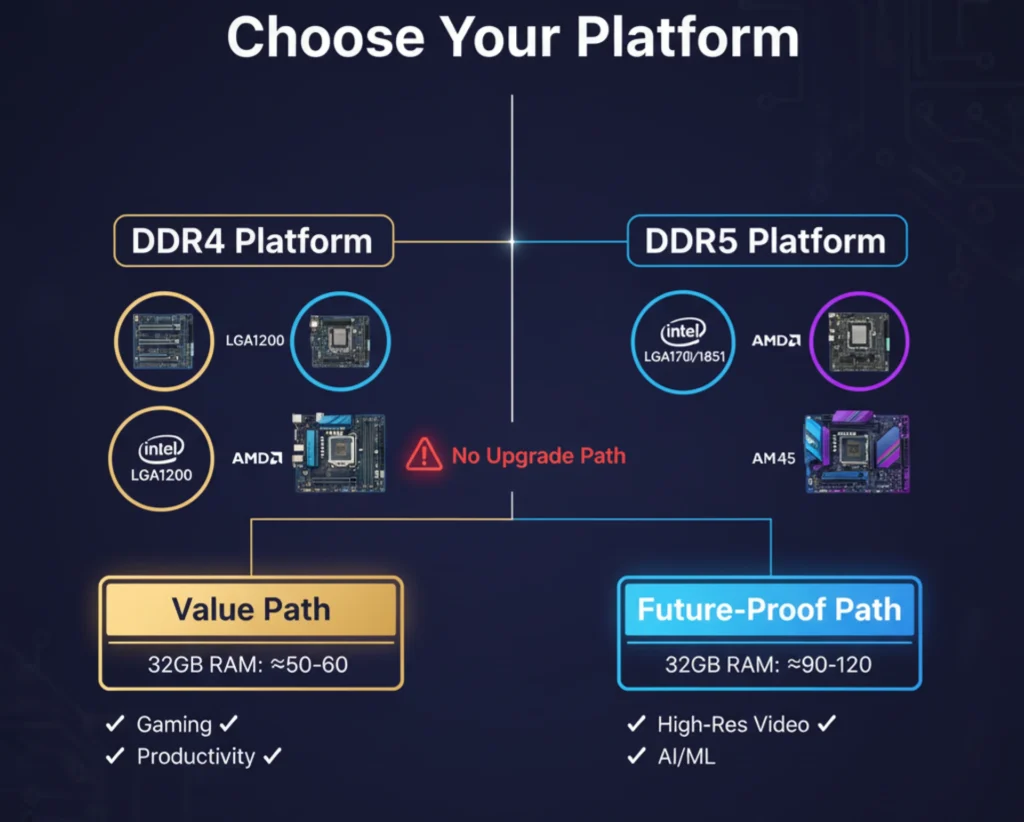
Matching your RAM capacity to your workload is crucial, regardless of whether you choose DDR4 or DDR5.
| Use Case | Recommended Capacity | Rationale & Notes |
|---|---|---|
| Gaming | 32GB (16GB absolute minimum) | 32GB is the 2025 sweet spot; provides headroom for modern games and background apps |
| Gaming + Streaming/Multitasking | 32GB (mandatory) | Ensures smooth operation of game, stream software, and other applications simultaneously |
| Content Creation / Entry-Level AI | 64GB (32GB minimum) | Handles large Photoshop files, 4K video timelines, and smaller AI models (e.g., 7B parameter LLMs) |
| Serious AI/ML Workloads | 64GB to 128GB+ | Essential for larger AI models (13B+ parameters), custom model training, and massive datasets |
Final Verdict
The answer to “is DDR5 worth it?” is clear but context-dependent. For new high-end builds, professional AI workstation RAM needs, and competitive gaming, DDR5 is the only and obvious choice. Its superior bandwidth, future-proof platform alignment, and high-capacity support make it essential.However, for budget-focused gaming PCs and upgrades to existing DDR4 budget build platforms, DDR4 continues to deliver exceptional value and more than enough performance for a great gaming experience. Let your budget, platform, and primary use case guide your decision.
Conclusion & Call to Action
Succinct Summary
The journey through the DDR5 vs. DDR4 landscape brings us to a clear final verdict. DDR5 is the undisputed champion for bandwidth-intensive professional and AI tasks, and it is the exclusive foundation for all new platforms, making it the definitive choice for future-proofing. Conversely, DDR4 remains an exceptional value for budget-conscious gamers and those with compatible systems, delivering robust performance without the premium cost.
The Final Verdict
For your RAM buying decision 2025, the path is straightforward: maximize value with DDR4 or maximize performance and longevity with DDR5. Your choice should be guided by your specific budget, workload demands, and upgrade plans.
